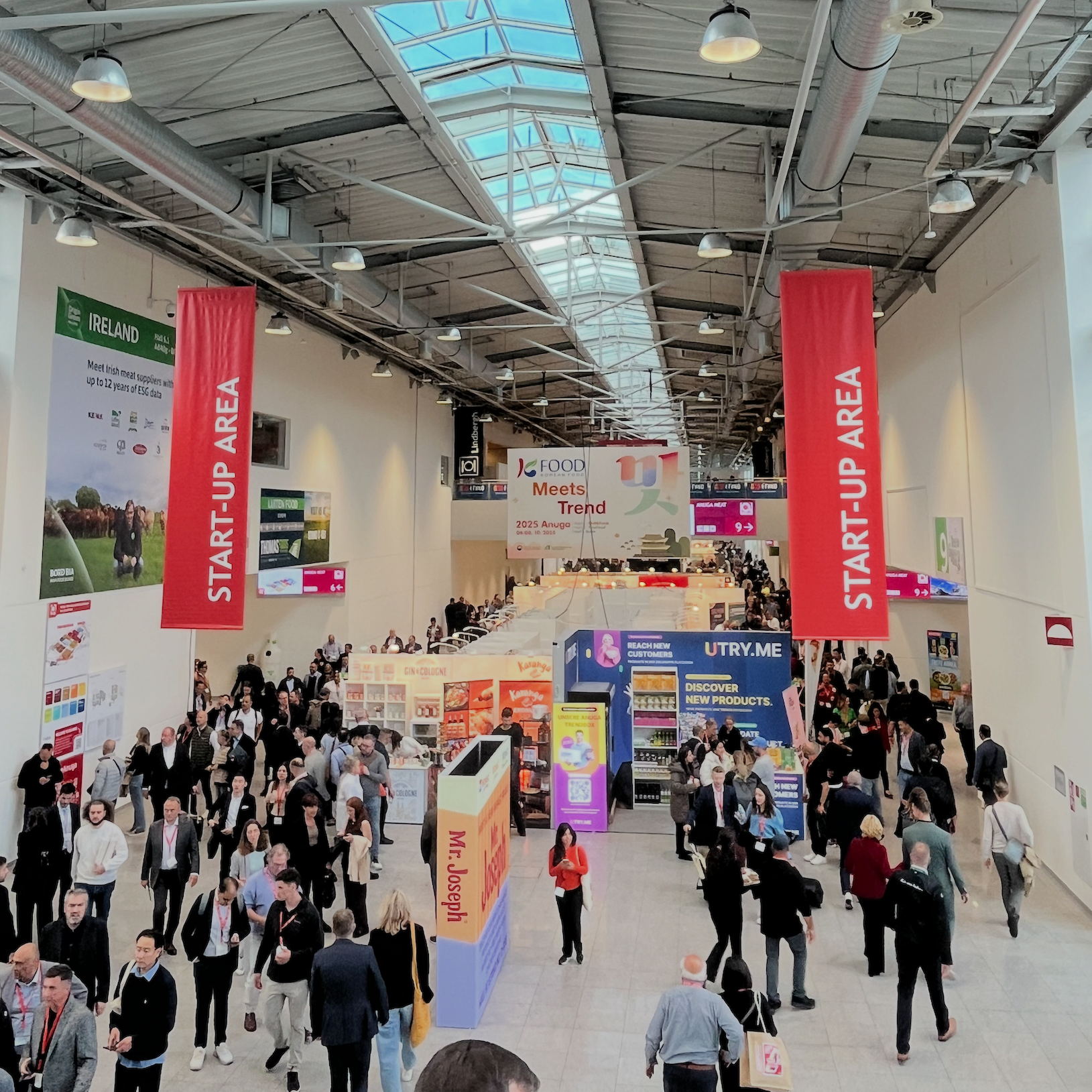From Bratwurst to Big Data: Our Takeaways from Anuga 2025
AI Gets Practical: What Food Leaders Really Want After Anuga 2025
More than 150,000 people from across the food system gathered in Cologne this year for Anuga 2025 - the world’s biggest stage for where food is heading next. From proteins to packaging, coffee to climate, the conversations made one thing clear: AI in food supply chains is no longer an experiment. It’s becoming practical.
The excitement wasn’t around futuristic tech or abstract innovation. It was around how data and intelligence can help the industry do the everyday things better: anticipate risks, steady supply, and make faster, more confident decisions.
Here’s what we heard on the ground:
1. Resilience is the new efficiency
For decades, food systems have been optimized for efficiency, cutting costs, shaving time, and minimizing waste. But at Anuga, the word that came up again and again wasn’t efficiency. It was resilience.
After years of shocks, from droughts to freight bottlenecks to geopolitical swings, companies are rethinking what “optimization” really means. It’s no longer “How do we move faster?” but “How do we stay standing when things change?”
The focus has shifted from squeezing margins to protecting them. Predictive tools are part of that story, but not because they’re shiny or new, because they help leaders see volatility coming before it hits the bottom line.
2. Climate intelligence is mainstream, but fragmented
Sustainability and climate risk were everywhere at Anuga. You couldn’t walk two booths without seeing a claim about regenerative sourcing or carbon reduction. But behind the messaging, most organizations are still struggling to make the data actually useful.
Many track impact in isolation, a carbon footprint here, a weather risk there. Few connect those dots to see how climate, yield, and price interact.
The next evolution isn’t more reporting; it’s integration. Food businesses want to know not just how sustainable they are, but how climate shifts will affect supply and cost next quarter. Climate data becomes powerful only when it informs real commercial decisions.
That’s why systems like Helios Horizon, our AI copilot for the food supply chain, are being designed to merge climate signals, commodity pricing, and disruption alerts into a single picture — helping teams make informed decisions, not reactive ones.
3. The rise of the “operational analyst”
Across categories, from meat and protein processors to beverage manufacturers, decision-makers are increasingly adopting a risk-management approach rather than a traditional buying mindset. Procurement is evolving from a transactional role to a strategic one, encompassing ESG, pricing, and supplier diversification.
These professionals increasingly expect intelligent copilots that can deliver actionable answers, not dashboards.
4. Decision intelligence must be instant
There’s a new behavioral truth shaping technology in food: if it takes more than a few seconds to show value, it’s too slow. At a fast-paced event like Anuga, where hundreds of demos compete for attention, the tools that stood out weren’t the ones with the most data; they were the ones that told the clearest story, fastest.
Executives don’t want complexity; they want clarity. A question like “What’s my exposure to drought in cocoa?” or “How could coffee prices move next quarter?” should lead straight to an answer, not a workflow. Speed to insight is becoming the new metric of intelligence.
5. Maturity matters in tech adoption
Anuga showcased a wide spectrum of digital maturity across the food industry. Sophisticated data users - especially those already leveraging commodity dashboards or pricing models - are eager for next-generation foresight tools. They recognize the limitations of retrospective systems and are actively looking for ways to anticipate volatility before it happens.
For these users, the appeal of AI copilots is clear: not more charts, but clearer signals. By contrast, smaller operators or early-stage companies often require more education on how predictive systems fit into daily workflows, an opportunity for AI copilots to evolve with their users.
6. Trust starts with local data
One recurring theme in market conversations was data localization. European and regional food companies are increasingly demanding granular, local datasets, whether that’s feed costs in Northern Germany or fruit yields in Southern Spain.
It’s a critical reminder: in predictive intelligence, credibility begins with coverage. Platforms that can show transparent sourcing and consistent regional accuracy will earn faster trust, and, ultimately, faster adoption.
7. Beyond visibility: turning foresight into advantage
Anuga 2025 made one thing unmistakably clear — the conversation has moved beyond visibility. Supply chain leaders no longer just want to know what’s happening; they want to know what’s next.
That’s where Helios AI is focused: unifying climate, commodity, price, and disruption signals into one foresight engine. The goal isn’t just resilience — it’s an advantage.
Predict early, act early, protect margins. Or as one global sourcing executive put it during the show:
“The winners won’t be the ones who react fastest — they’ll be the ones who saw it coming.”
The takeaway
Anuga 2025 wasn’t about flashy AI demos or software booths. It was about listening to what the industry needs next — confidence, context, and clarity. Predictive intelligence is no longer futuristic; it’s becoming the foundation of competitive strategy.
At Helios AI, we believe the next decade of food supply chains will be defined not by who has the most data, but by who has the best foresight.

